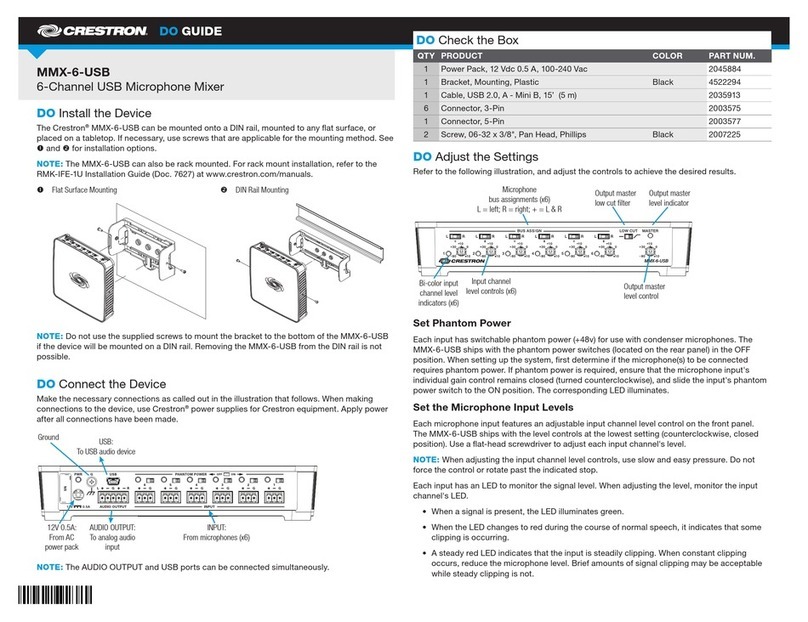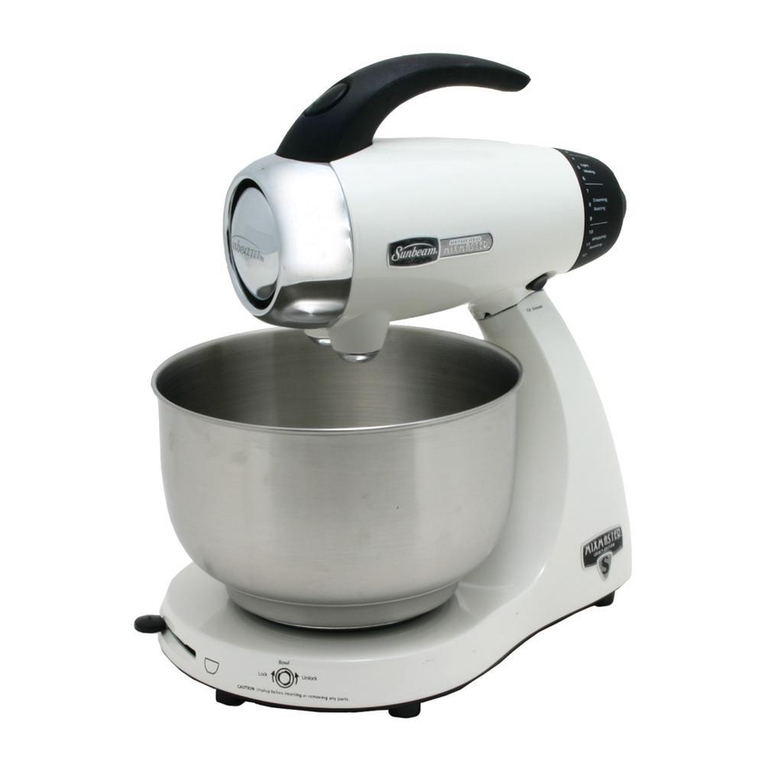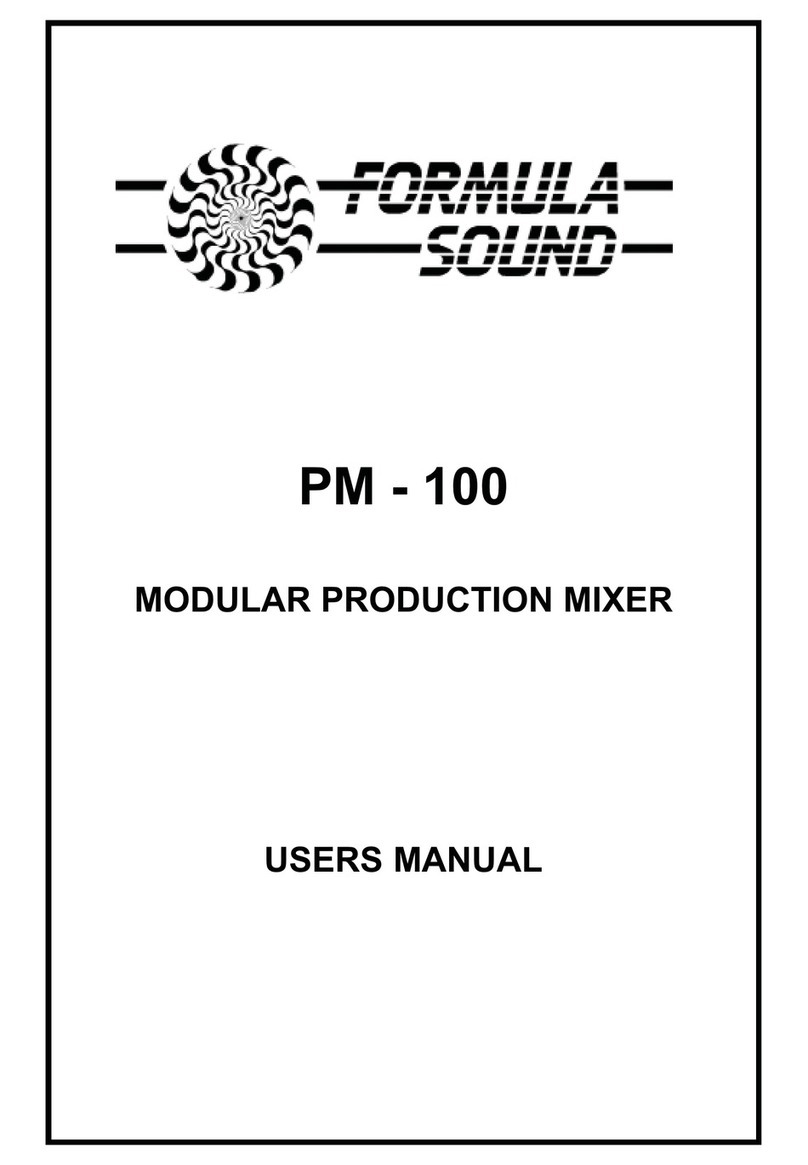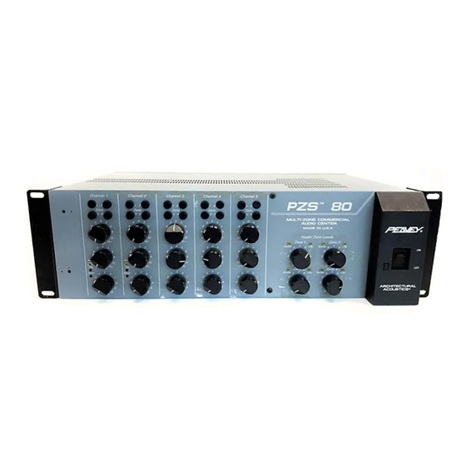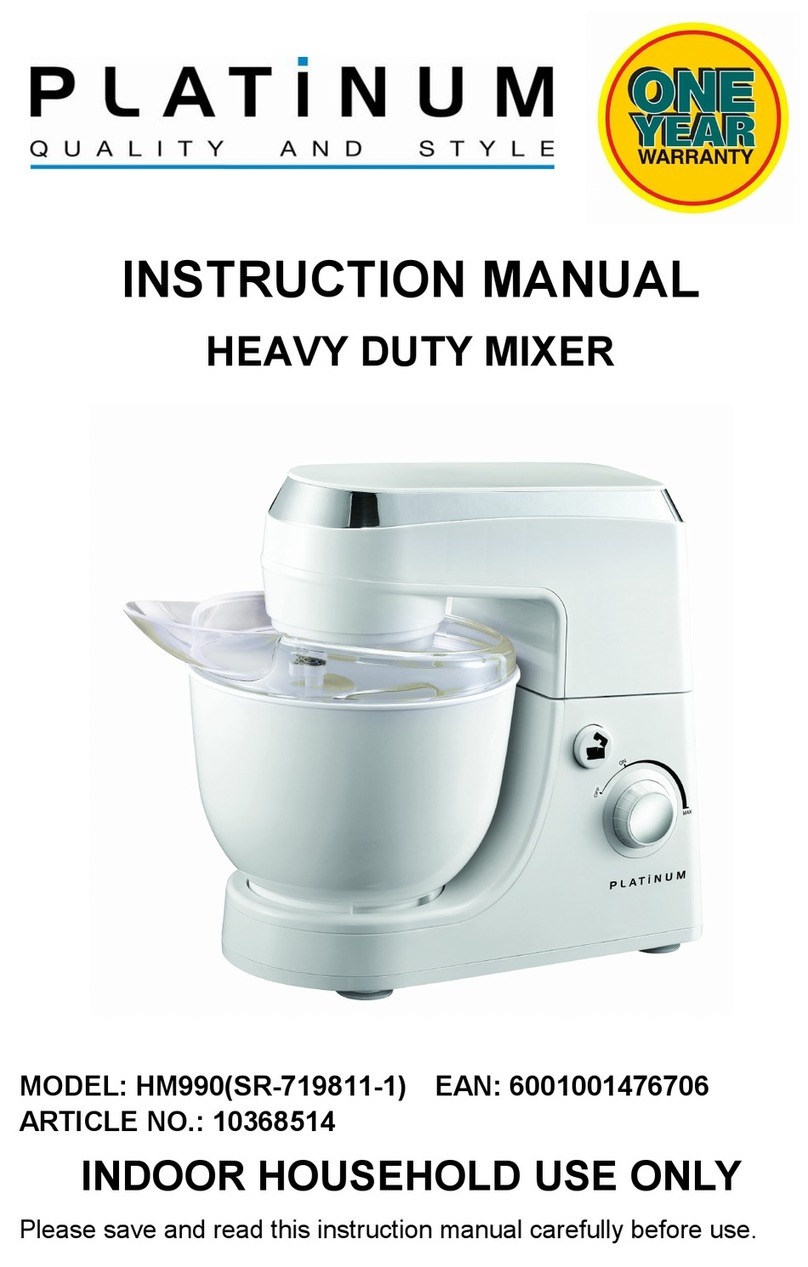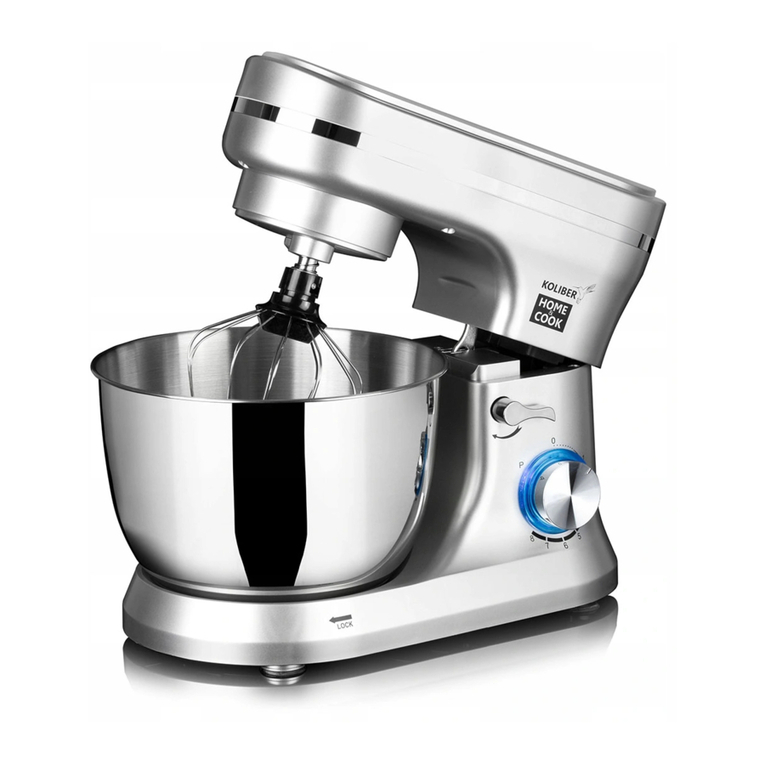Audibax 1202 FXX User manual

Please read the manual before using the product
USER´S
MANUAL
1202 FXX
Proffesional Mixer
1202 FXX

USER´S
MANUAL 5
1202 FXX
The symbol is used to indicate that some hazardous live terminals are involved within this apparatus, even
under the normal operating conditions, which may be sufficient to constitute the risk of electric shock or
death.
The symbol is used in the service documentation to indicate that specific component shall be replaced
only by the component specified in that documentation for safety reasons.
Protective grounding terminal
Alternating current/voltage
Hazardous live terminal
ON: Denotes the apparatus is turned on
OFF: Denotes the apparatus is turned off.
WARNING: Describes precautions that should be observed to prevent the danger of injury or death to the operator.
CAUTION: Describes precautions that should be observed to prevent danger of the apparatus.
IMPORTANT SAFETY INSTRUCTIONS
·Read these instructions.
·Keep these instructions.
·Heed all warning.
·Follow all instructions.
·Water & Moisture
The apparatus should be protected from moisture and
rain, can not used near water, for example: near bath-
tub, kitchen sink or a swimming pool, etc.
·Heat
The apparatus should be located away from the heat
source such as radiators, stoves or other appliances
that produce heat.
·Ventilation
Do not block areas of ventilation opening. Failure to
do could result in fire. Always install accordance with
the manufacturer's instructions.
·Object and Liquid Entry
Objects do not fall into and liquids are not spilled into
the inside of the apparatus for safety.
·Power Cord and Plug
Protect the power cord from being walked on or pinched
particularly at plugs, convenience receptacles, and the
point where they exit from the apparatus.
Do not defeat the safety purpose of the polarized or
grounding-type plug. A polarized plug has two blades
with one wider than the other. A grounding type plug
has two blades and a third grounding prong. The wide
blade or the third prong is provided for your safety.
If the provided plug does not fit into your outlet, refer to
electrician for replacement.
CAUTION
RISK O F ELE CT RIC S HOCK
DO NOT O PEN
IMPORTANT SAFETY SYMBOLS
·Power Supply
The apparatus should be connected to the power supply
only of the type as marked on the apparatus or described
in the manual. Failure to do could result in damage to the
product and possibly the user.
Unplug this apparatus during lightning storms or when
unused for long periods of time.
·Fuse
To prevent the risk of fire and damaging the unit, please
use only of the recommended fuse type as described in
the manual. Before replacing the fuse, make sure the unit
turned off and disconnected from the AC outlet.
·Electrical Connection
Improper electrical wiring may invalidate the product war-
ranty.
·Cleaning
Clean only with a dry cloth. Do not use any solvents such
as benzol or alcohol.
·Servicing
Do not implement any servicing other than those means
described in the manual. Refer all servicing to qualified
service personnel only.
·Only use accessories/attachments or parts recommended
by the manufacturer.
·Warning
Please remember the high sound pressure do not only
temporarily damage your sense of hearing, but can also
cause permanent damage. Be careful to select a suitable
volume.
10.SPECIFICATIONS
Main XLR Balanced out +26dBu±1dBu
Main 1/4" Jack Balanced out +26dBu±1dBu
Maximum Balanced Output Level
(1%T.H.D. at 1kHz )
Maximum Unbalanced Output Level
(1%T.H.D. at 1kHz )
Main XLR Unbalanced out +21dBu ±1dBu
Main 1/4" Jack Unbalanced out +21dBu±1dBu
Headphone output 150mw±5mw @ 32ohms
THD+N <0.025% @ + 14dBu ±0.5dBu
20Hz~20kHz±2dB
128dBu ±5dBu Mic Pre Equivalent Input Noise
86dBu ±5dBu Residual Noise
80dB ±5dB @ fader max
Frequency Response
Hum and Noise 20Hz-20Khz(150R)
S/N
Maximum Input Level
Mic +4dBu ±1dBu
Channel LineA/N
Stereo Line +21dBu ±1dBu
Impedances
Mic: Balanced 6 Kohms, Unbalanced 3Kohms ±200ohms
Line: Balanced 44 Kohms, Unbalanced 22Kohms ±2kohms
All other Unbalanced outputs:100 ohms,Balanced outputs: 200ohms
Mono Input Channel Gain 44dB Variable MIC(-16~-60dB) Line(-10dB~+34dB)
Input Channel EQ
High (+/-10dB)±1.5dB 12kHz Shelving
Mid (+/-10dB)+/-1.5dB 1kHz Shelving
Low (+/-10dB)±1.5dB 80Hz Shelving
Effect 16: (1).Reverb Hall1; (2).Reverb Hall2; (3).Reverb Room1;
(4).Reverb Room2; (5).Reverb Stage1; (6).Reverb Stage2; (7).Reverb Plate1;
(8).Reverb Plate2; (9).Karaoke Echo; (10).Vocal Echo; (11).Chorus1;
(12).Chorus2; (13).Flanger; (14).Phaser; (15).Delay1; (16).Delay2)
Effect Out
63dB±3dB @ 1kHz
62dBv ±3dBv @ gian fader max
48V±2V
AC100V/240V, 50Hz/60z
12-Segment LEDx2 (output of +4dB = 0dB) Main L/R
CMRR
FFT
Pantom Power
Level Meter
AC Power options
Dimensions(HxWxD)
Weights
1202FXX: 98mmx310mmx350mm
1202FXX: 3.85kg

4 1
1202 FXX USER´S
MANUAL
You will need a larger number of cable for the various
connections to and from the console. The illustrations below
show. The wing of these cables. Be sure to use only high-grade
cable.
Please use commercial RCA cables to wire the 2-track inputs
and outputs.
You can, of course, also connect unbalanced devices to the
balanced input/outputs. Use either mono plugs, or ensure that
ring and sleeve are bridged inside the stereo plug (or pins 1 & 3
in the case of XLR connectors).
8.INSTALLATION
8.1 Cable connections
8.2 Audio connections
Caution! You must never use unbalanced XLR
connectors (pin 1 and 3 connected) on the MIC inputs
if you in tend to use the phantom power supply.
Fig. 8.1: 1/4"TS connector for foot switch
The foot switch connects the two poles momentarily
1/4"TS con nector for us e with foot switch
strain relief clamp
sleeve
tip
sleeve tip
pole 1/ground pole 2
The foot switch connects the two poles momentarily
strain relief clamp
sleeve
tip
sleeve tip
ground shield signal
For unbalanced use pin 1 and pin 3 have to be bridged
For connection of balanced and unbalanced plus,
rig and sleeve have to be bridged at the stereo plug
Headphones connection
with 1/4"T RS connecto r
strain relief clamp
sleeve
tip
sleeve tip
ground shield left signal
Fig. 8.5: 1/4"TRS connector for headphones
Fig. 8.4: 1/4"TRS connector
Fig. 8.3: 1/4"TS connector
Fig. 8.2: XLR connections
ring
right signal
ring
strain relief clamp
sleeve
tip
sleeve tip
ground shield hot (+ ve)
ring
cold (- ve)
ring
Balanced use of
1/4"TRS connector
Unbalanced use of
1/4"TRS connector
Balanced use with XLR connectors
1=groud / shield
2=hot (+ve)
3=cold (-ve)
1
2
3
12
3
Input Output
POWER
100 - 240 V ~ 50/60 Hz 40W
FUSE: T1.6 AH 250V
CAU T I O N
RISK OF ELECTRIC SHOCK
DO NOT OPEN
DATE C ODE:
SER IA L No:
PIN 2 = HOT / PIN 3 = COLD
MAIN OUTPUTS
R L
ON
OFF
55 56 57
55. IEC receptacle for AC power supply
56. Toggles the power on or off
57. Balanced XLR main outputs
58. Balanced/unbalanced TRS main outputs
7.Rear Panel Outputs
58
9.USB INTERFACE
The USB connector enables computers with USB connectivity to
interface directly with the mk Series mixer for full duplex recording
and playback. In recent years the introduction of USB connectivity
has ushered a new appreciation of the capabilities of computer
audio, helping to fuse both digital and analogue and open up
endless possibilities for the recording musician. The internal AD
(Analogue to Digital) and DA (Digital to Analogue) converters are
16-bit/48KHz enabling recording and playback above CD quality,
ensuring that recordings that you make with an mk Series Mixer
have outstanding quality.
TABLE OF CONTENTS
1.Introduction .......................................................................................... 2
2.Features ............................................................................................... 2
3.Mono Channels ..................................................................................... 2
4.Stereo Channels ................................................................................... 2
5.FX and Aux ...........................................................................................3
6.Front Panel Inputs and Master Outputs .................................................3
7.Rear Panel Outputs ...............................................................................4
8.Connections ......................................................................................... 4
9. USB Interface ....................................................................................... 4
10.Specifications ....................................................................................5

2 3
1202 FXX USER´S
MANUAL
1.INTRODUCTION
Congratulations on the purchase of your Series mixer Profes-
sional. Please take the time to read this manual completely in
order to ensure that you get the most from your Series mixer .
♦ 6 balanced/ unbalanced mono line input 1202FXX
♦ 6
low
noise, high headroom XLR mic inputs 1202FXX
♦ 3 band EQ in each input channel (12KHz, 1KHz, 80Hz)
80Hz, 18dB/octave low cut filter on channels 1202FXX 1-6
♦2Stereochannels (2switchablestereo 1 switching for PAD;
2switching for line/USBreturnchannel)2 band EQ(12KHz,
80Hz).
♦2in/2outfullduplex16-bit48KHzUSBinterface.
♦DedicatedUSBrecordingbus.
♦Studiogradephantompoweredmicrophonepre-amps.
♦Ultramusical3bandEQwithhighpassfilters.
♦Built-indigitalFXwithdedicatedsend.
♦ fxauxiliarysends.
♦Panandbalancecontrols.
♦PFLforallchannels.
♦Controlroomandheadphoneoutputs.
♦MasteroutputswithXLRandTRSconnectors.
2.FEATURES
3.MONO CHANNELS
MI C 1
0
-10 +10
EQ
HI GH
12KHz
MI D
1KHz
0
-10 +10
LOW
80Hz
0
-10 +10
AUX
0
-
8
+15
PRE
POST
FX
0
-
8
+15
PAN
L R
PF L
dB
10
5
0
5
10
15
30
8
LI NE
BA L/U NB AL
80Hz
HPF
MIC: -16
LINE:+10
-60 dB
-34 dB
+4 GA IN
1
PE AK
1
2
3
4
5
6
7
8
10
11
12
13
14
15
9
ST E R E O I N
L
R
RE C OU T
L
R
L
R
LI NE
L
R
MON O
PAD L IN E
US B
0
-10 +10
EQ
HI GH
12KHz
LOW
80Hz
0
-10 +10
AUX
0
-
8
+15
PRE
POST
FX
0
-
8
+15
BA L
L R
PF L
dB
10
5
0
5
10
15
30
8
9/1 0
PE AK
4.STEREO CHANNELS
16 30
17
19
18
31
33
32
20
21
22
23
24
25
26
27
28
29
1. Balanced XLR input for connecting microphones.
2. Balanced/Unbalanced TRS input for line level sources.
3. HPF with 80Hz cutoff point.
4. Gain control for calibrating sources and applying correct
gain structure.
5. High EQ centred at 12KHz.
6. Mid EQ centred at 1KHz.
7. Low EQ centred at 80Hz.
8. Switchable pre/post-fader auxiliary send for monitor mixes.
9. Pre/Post switching for Aux.
10. Sends to the internal FX engine.
11. Used to spatially place the channel within the stereo field.
12. (Pre Fade Listen) allows you to set the channel gain and
monitor the channel in isolation through the control room or
headphone outputs.
13. Indicates that PFL is engaged.
14. Shows when clipping is occurring.
15. Sets the amount of signal sent to the main.
34. Adjust the effect of the selected parameters (depth, speed).
35. Sends the FX output to the Auxiliary bus 1 so that FX can
be heard in monitor mixes.
36. Sends the output of the FX processor to the main mix bus.
37. Controls the overall level of the Aux bus.
38. Controls the overall level of the FX bus.
39. Selects the effect algorithm as listed below the control.
40. Shows when the FX bus is overloaded.
41. Turns the FX processor on or off.
5.FX AND AUX
0
+10
FX TO AU X
-6
-40
-
8
+5
0
+10
FX TO M I X
-6
-40
-
8
+5
AU X S EN D
0
-
8
+15
FX S E N D
0
-
8
+15
ON
OFF
SI G N A L
MIN MAX
PA R A ME T E R
1Reverb Hall1
2Reverb Hall2
3Reverb Room1
4Reverb Room2
5Reverb St ag e 1
6Reverb St ag e 2
Reverb Pl at e 1
Reverb Pl at e 2
9Karaoke Ec ho
10 Voca l Ec ho
11 Chorus 1
12 Chor us 2
13 Flanger
14 Phas er
15 Delay 1
16 Delay 2
9
6
5
21
14
12
11
EF X.
7
8
4
3
13
10
8
7
16
15
34
35
36
37
38
39
40
41
42. Aux send outputs the signal sent to each respective bus.
These can be used to feed processors or monitors.
43.Fx send outputs the signal sent to each respective bus.
These can be used to feed processors or monitors.
44. Connects to your computer for full duplex class-compliant
recording and playback.
45. For connecting headphones.
46. Used for control room monitoring, connect directly to your
power amplifier or active speakers.
47. This jack allows for the remote on / off switching of the
digital effects unit. A normally-open, latching footswitch is
required.
48. Switches the +48v phantom power on or off.
49. Indicates AC power supply.
50. Shows the level present at the master bus, when PFL is
engaged shows the level of the selected channels (left side
of metering only).
51. Indicates +48v phantom power activity.
52. This LED lights up to indicate when any channel SOLO button
is engaged.
53. Controls the level of the control room and headphone
Outputs.
54. Controls the master level of the main mix bus.
6.FRONT PANEL INPUTS AND
MASTER OUTPUTS
42
AU X S E N D US B PH O NE S
FX S EN D CR O UT
FO OT S W ITC H
L
R
MK1202FX
EF FE CT
ON/ OFF
+48 V
ONOFF
+48V POWER
-
8
MAX
+18
+16
+13
+10
+6
+3
0
-3
-6
-10
-20
-30
PFL
L
(PFL)
R
CR & P HO NES
dB
10
5
0
5
10
15
30
8
LR
MIX
43
44
45
46
47
48
5049
51
53
54
52
16. CD/Tape In-Dual phono inputs for connection of consumer
level stereo sources.
17. Unbalanced TRS input for the left channel of stereo line
level sources.
18.PAD Switchable, between stereo RCA and line level source.
19. Unbalanced TRS input for the right channel of stereo line
level sources.
20. High EQ centred at 12KHz.
21. Low EQ centred at 80Hz.
22. Switchable pre/post-fader auxiliary send for monitor mixes.
23. Pre/Post switching for Aux.
24. Sends to the internal FX engine.
25. Used to spatially place the channel within the stereo field.
26. (Pre Fade Listen) allows you to set the channel gain and
monitor the channel in isolation through the control room or
headphone outputs.
27. Indicates that PFL is engaged.
28. Shows when clipping is occurring.
29. Sets the amount of signal sent to the main.
30. Rec Out - Line level output using phono connectors, provides
connection to recording devices.
31. Balanced/Unbalanced TRS input for the left channel or mono
line level sources.
32. Switches between USB and line level source.
33. Balanced/Unbalanced TRS input for the right channel of
stereo line level sources.

Por favor lea el manual antes de usar el producto
MANUAL
DE USUARIO
1202 FXX
Mezclador Porfesional
1202 FXX

MANUAL
DE USUARIO 5
1202 FXX
CAUTION
RISK OF ELECT RIC SHOCK
DO NOT OPEN
10.SPECIFICATIONS
XLR principal equilibrado +26dBu±1dBu
Jack principal de 1/4 "balanceado +26dBu±1dBu
Nivel de salida equilibrado máximo
(1%T.H.D. at 1kHz )
Nivel máximo de salida no balanceada
(1%T.H.D. at 1kHz )
XLR principal desequilibrado +21dBu ±1dBu
Jack principal de 1/4 "desequilibrado +21dBu±1dBu
Salida de auriculares 150mw±5mw @ 32ohms
THD+N <0.025% @ + 14dBu ±0.5dBu
20Hz~20kHz±2dB
128dBu ±5dBu Ruido de entrada de micrófono pre equivalente
86dBu ±5dBu Ruido residual
80dB ±5dB @ fader max
Respuesta frecuente
Zumbido y ruido 20Hz-20Khz(150R)
S/N
Nivel de entrada máximo
Mic +4dBu ±1dBu
Línea de canal A / N
Linea estereo +21dBu ±1dBu
Impedancias
Micrófono: equilibrado 6 Kohms, desequilibrado 3Kohms ±200ohms
Línea: balanceada 44 Kohms, no balanceada 22Kohms ±2kohms
Todas las demás salidas no balanceadas: 100 ohms, salidas balanceadas: 200ohms
Ganancia de canal de entrada mono 44dB Variable MIC(-16~-60dB) Line(-10dB~+34dB)
Ecualizador de canal de entrada
Alto (+/-10dB)±1.5dB 12kHz Estantería
Medio (+/-10dB)+/-1.5dB 1kHz Estantería
Bajo (+/-10dB)±1.5dB 80Hz Estantería
Efecto de salida
63dB±3dB @ 1kHz
62dBv ±3dBv @ gian fader max
48V±2V
AC100V/240V, 50Hz/60z
12-Segmento LEDx2 (output of +4dB = 0dB) Principal L/R
CMRR
FFT
Poder fantasma
Medidor de nivel
Opciones de corriente alterna
Dimensiones(HxWxD)
Peso
1202FXX: 98mmx310mmx350mm
1202FXX: 3.85kg
SIMBOLOS DE SEGURIDAD IMPORTANTES
INSTRUCCIONES DE SEGURIDAD IMPORTANTES
El símbolo se utiliza para indicar que algunos terminales activos peligrosos están involucrados dentro de
este aparato, incluso en condiciones normales de funcionamiento, lo que puede ser suficiente para
constituir el riesgo de descarga eléctrica o muerte.
El símbolo se usa en la documentación de servicio para indicar que un componente específico debe ser
reemplazado solo por el componente especificado en esa documentación por razones de seguridad.
Terminal de puesta a tierra de protecciónonente.
Corriente alterna / voltaje
Peligrosa terminal viva
ON: indica que el aparato está encendido
OFF: Denota que el aparato está apagado.
ADVERTENCIA: Describe las precauciones que deben observarse para evitar el peligro de lesiones o muerte para el
operador.
PRECAUCIÓN: describe las precauciones que deben observarse para evitar el peligro del aparato.
· Lea estas instrucciones.
· Guarde estas instrucciones.
· Preste atención a todas las advertencias.
· Siga todas las instrucciones.
· Agua y humedad
El aparato debe protegerse de la humedad y la lluvia, no
puede usarse cerca del agua, por ejemplo: cerca de la
bañera, el fregadero o la piscina, etc.
·Calor
El aparato debe ubicarse lejos de la fuente de calor,
como radiadores, estufas u otros aparatos que producen
calor.
·Ventilación
No bloquee las áreas de apertura de ventilación. De lo
contrario, podría provocar un incendio. Siempre instale
de acuerdo con las instrucciones del fabricante.
· Entrada de objetos y líquidos
Los objetos no deben caer y los líquidos no se deben
derramar en el interior del aparato por seguridad.
· Cable de alimentación y enchufe
Proteja el cable de alimentación para que no sea pisado
o pellizcado, particularmente en los enchufes,
receptáculos de conveniencia y el punto donde salen del
aparato.
No anule el propósito de seguridad del enchufe
polarizado o con conexión a tierra. Un enchufe
polarizado tiene dos terminales, uno más ancho que el
otro. Un enchufe de conexión a tierra tiene dos patillas y
una tercera punta de conexión a tierra. La cuchilla
ancha o la tercera punta se proporcionan para su
seguridad. Si el enchufe provisto no cabe en su toma de
corriente, consulte al electricista para que lo reemplace
·Fuente de alimentación
El aparato debe conectarse a la fuente de alimentación solo
del tipo marcado en el aparato o descrito en el manual. De lo
contrario, podría dañar el producto y posiblemente al
usuario. Desenchufe este aparato durante tormentas
eléctricas o cuando no se utilice durante largos períodos de
tiempo.
·Fusible
Para evitar el riesgo de incendio y dañar la unidad, utilice
solo el tipo de fusible recomendado como se describe en el
manual. Antes de reemplazar el fusible, asegúrese de que la
unidad esté apagada y desconectada de la toma de CA.
·Conexión eléctrica
Un cableado eléctrico incorrecto puede invalidar la garantía
del producto.
·Limpieza
Limpiar solamente con un paño seco. No utilice disolventes
como benzol o alcohol.
· Servicio
No implemente ningún servicio que no sean los medios
descritos en el manual. Remita todas las reparaciones solo a
personal de servicio calificado.
· Utilice únicamente accesorios / aditamentos o piezas
recomendadas por el fabricante.
·Advertencia
Recuerde que la alta presión sonora no solo daña
temporalmente su sentido del oído, sino que también puede
causar daños permanentes. Tenga cuidado de seleccionar
un volumen adecuado.
Efecto 16: (1). Sala de Reverberación 1; (2). Reverberación Hall2; (3). Cuarto
de Reverberación1;(4). Cuarto de Reverberación2; (5). Escenario de
Reverberación 1; (6). Escenario de Reverberación 2; (7). Plato de
Reverberación1;(8). Plato de Reverberación 2; (9).Eco de Karaoke; (10). Eco
vocal; (11). Coro1;(12). Coro2; (13).Flanger; (14).Phaser; (15). Retrasar 1;
(16). Retrasar2)

4 1
1202 FXX MANUAL
DE USUARIO
8.INSTAL
A
CIÓN
manga
punta
manga punta
polo 1/tierra polo 2
The foot switch connects the two poles momentarily
manga
escudo a tierra señal
Señal izquierda
Señal derecha
escudo a tierra caliente (+ ve)
frio (- ve)
anilloanillo
anilloanillo
1
2
3
12
3
POWER
100 - 240 V ~ 50/60 Hz 40W
FUSE: T1.6 AH 250V
CAU T I O N
RISK OF ELECTRIC SHOCK
DO NOT OPEN
DATE C ODE:
SER IA L No:
PIN 2 = HOT / PIN 3 = COLD
MAIN OUTPUTS
R L
ON
OFF
55 56 57
58
9. USBNI TERFAZ
TABLE OF CONTENTS
..........................................................................................2
......................................................................................2
... ....................................................................................2
...................................................................................2
.......... .....................................................................................3
........................................3
....................................................................4
..... ......................................................................................4
...... ....................................................................................4
................................................................................. 5
55. Receptáculo IEC para fuente de alimentación de CA
56. Activa o desactiva la alimentación
57. Salidas principales XLR balanceadas
58. Salidas principales de TRS balanceadas / no balanceadas
Necesitará una mayor cantidad de cable para las diversas
conexiones hacia y desde la consola. Las siguientes
ilustraciones muestran. El ala de estos cables. Asegúrese de
usar solo cable de alta calidad.
Utilice cables comerciales RCA para cablear las entradas y
salidas de 2 pistas.
Por supuesto, también puede conectar dispositivos no
balanceados a las entradas / salidas balanceadas. Use
enchufes mono o asegúrese de que el anillo y la funda estén
puenteados dentro del enchufe estéreo (o los pines 1 y 3 en
el caso de los conectores XLR). El conector USB permite que las computadoras con
conectividad USB interactúen directamente con el mezclador
de la serie mk para grabación y reproducción dúplex
completo. En los últimos años, la introducción de la
conectividad USB ha dado paso a una nueva apreciación de
las capacidades del audio de la computadora, ayudando a
fusionar tanto lo digital como lo analógico y abrir infinitas
posibilidades para el músico de grabación. Los
convertidores internos AD (Analógico a Digital) y DA (Digital
a Analógico) son de 16 bits / 48KHz, lo que permite la
grabación y reproducción por encima de la calidad del CD,
asegurando que las grabaciones que realice con un
mezclador de la serie mk tengan una calidad excepcional.
¡Precaución! Nunca debe usar conectores XLR no
balanceados (pin 1 y 3 conectados) en las entradas MIC
si tiende a usar la fuente de alimentación fantasma.
8.1 Conexiones de cable
8.2 Conexiones de audio
Fig. 8.1: conector 1/4 "TS para interruptor de pie
conector 1/4 "TS para interruptor de pie
Uso no balanceado del
conector TRS de 1/4 "
Uso balanceado del
conector TRS de 1/4 "
Conexión de auriculares
con conector TRS de 1/4 "
Uso equilibrado con conectores XLR
Para el uso desequilibrado, los pines 1 y 3 deben ser puenteados
El interruptor de pie conecta los dos polos momentáneamente
Para la conexión de plus balanceado y no balanceado, la
plataforma y la manga deben estar unidas en el enchufe estéreo
1 = tierra / escudo
2 = caliente (+ve)
3 = frio (-ve)
Entrada Salida
abrazadera de alivio de tensión
manga
punta
punta
abrazadera de alivio de tensión
manga
manga
escudo a tierra
manga
punta
punta
abrazadera de alivio de tensión
manga
punta
punta
abrazadera de alivio de tensión
Fig. 8.2: Conexiones XLR
Fig. 8.3: conector 1/4 "TS
Fig. 8.4: conector 1/4 "TRS
Fig. 8.5: conector 1/4 "TRS para auriculares
7. Salidas del panel posterior
1. Introducción
2. Características
3. Canales mono
4. Canales estéreo
5. FX y Aux
6. Entradas del panel frontal y salidas maestras
7. Salidas del panel posterior
8. Conexiones
9. Interfaz USB
10. Especificaciones

2 3
1202 FXX MANUAL
DE USUARIO
MI C 1
0
-10 +10
EQ
HIG H
12KHz
MID
1KHz
0
-10 +10
LOW
80Hz
0
-10 +10
AUX
0
-
8
+15
PRE
POST
FX
0
-
8
+15
PAN
L R
PFL
dB
10
5
0
5
10
15
30
8
LIN E
BA L/U NBA L
80Hz
HPF
MIC: -16
LINE:+10
-60 dB
-34 dB
+4 GAI N
1
PEA K
1
2
3
4
5
6
7
8
10
11
12
13
14
15
9
ST E R E O IN
L
R
RE C OU T
L
R
L
R
LIN E
L
R
MON O
PAD L IN E
US B
0
-10 +10
EQ
HI GH
12KHz
LOW
80Hz
0
-10 +10
AUX
0
-
8
+15
PRE
POST
FX
0
-
8
+15
BA L
L R
PF L
dB
10
5
0
5
10
15
30
8
9/1 0
PE AK
16 30
17
19
18
31
33
32
20
21
22
23
24
25
26
27
28
29
0
+10
FX TO AU X
-6
-40
-
8
+5
0
+10
FX TO M I X
-6
-40
-
8
+5
AU X S E N D
0
-
8
+15
FX S EN D
0
-
8
+15
ON
OFF
SI GN A L
MIN MAX
PAR A M E T E R
1Rev erb H al l1
2Rev erb H al l2
3Rev erb R oo m1
4Rev erb R oo m2
5Rev erb St age 1
6Rev erb St age 2
Rev erb Pl ate 1
Rev erb Pl ate 2
9Kar aok e Ec ho
10 Voca l Ech o
11 Chor us 1
12 Chor us 2
13 Flanger
14 Phas er
15 Dela y 1
16 Dela y 2
9
6
5
21
14
12
11
EF X.
7
8
4
3
13
10
8
7
16 15
34
35
36
37
38
39
40
41
42
AU X S E N D US B PH O NE S
FX S EN D CR O UT
FO OT S W ITC H
L
R
MK1202FX
EF FE CT
ON/ OFF
+48 V
ONOFF
+48V POWER
-
8
MAX
+18
+16
+13
+10
+6
+3
0
-3
-6
-10
-20
-30
PFL
L
(PFL)
R
CR & P HO NES
dB
10
5
0
5
10
15
30
8
LR
MIX
43
44
45
46
47
48
5049
51
53
54
52
Felicitaciones por la compra de su mezclador Series Professional.
Tómese el tiempo de leer este manual por completo para
asegurarse de aprovechar al máximo su mezclador de la serie.
♦ 4 entradas de línea mono balanceadas / no balanceadas
MK802FX, 6 entradas de línea mono balanceadas / no
balanceadas MK1002FX y 8 entradas de línea mono balanceadas
/ no balanceadas MK1202FX.
♦ 4 entradas de micrófono XLR de bajo nivel de ruido, MK802FX,
6 entradas de micrófono XLR de alto nivel de ruido MK1002FX y 8
entradas de micrófono XLR de alto margen MK1202FX.
♦ Ecualizador de 3 bandas en cada canal de entrada (12KHz,
1KHz, 80Hz) 80Hz, filtro de corte bajo de 18dB / octava en los
canales MK802FX 1-4, MK1002FX 1-6, MK1202FX 1-8.
♦ 2 canales estéreo (2 conmutables estéreo 1 conmutación para
PAD; 2 conmutadores para línea / canal de retorno USB)
Ecualizador de 2 bandas (12KHz, 80Hz).
♦ Interfaz USB full duplex de 16 bits y 48 kHz a 2 entradas / 2
salidas.
♦ Bus de grabación USB dedicado.
♦ Preamplificadores de micrófono con alimentación phantom de
estudio.
♦ Ecualizador ultra musical de 3 bandas con filtros de paso alto.
♦ FX digital incorporado con envío dedicado.
♦ fx envíos auxiliares.
♦ Pan y controles de equilibrio.
♦ PFL para todos los canales.
♦ Sala de control y salidas de auriculares.
♦ Salidas maestras con conectores XLR y TRS.
1. Entrada XLR balanceada para conectar micrófonos.
2. Entrada TRS balanceada / no balanceada para fuentes de nivel
de línea.
3. HPF con punto de corte de 80Hz.
4. Control de ganancia para calibrar fuentes y aplicar la estructura
de ganancia correcta.
5. Alto EQ centrado a 12KHz.
6. Mid EQ centrado a 1KHz.
7. Ecualizador bajo centrado a 80Hz.
8. Envío auxiliar pre / post-fader conmutable para mezclas de
monitor.
9. Pre / Post conmutación para Aux.
10. Envía al motor FX interno.
11. Se utiliza para colocar espacialmente el canal dentro del
campo estéreo.
12. (Pre Fade Listen) le permite configurar la ganancia del canal y
monitorear el canal de forma aislada a través de la sala de control
o las salidas de auriculares.
13. Indica que PFL está activado.
14. Muestra cuándo se produce el recorte.
15. Establece la cantidad de señal enviada al principal.
16. Entradas phono CD / Tape In-Dual para la conexión de fuentes
estéreo de nivel de consumidor.
17. Entrada TRS no balanceada para el canal izquierdo de fuentes
de nivel de línea estéreo.
18.PAD conmutable, entre RCA estéreo y fuente de nivel de línea.
19. Entrada TRS no balanceada para el canal derecho de fuentes de
nivel de línea estéreo.
20. Alto EQ centrado a 12KHz.
21. Ecualizador bajo centrado a 80Hz.
22. Envío auxiliar conmutable pre / post-fader para mezclas de
monitor.
23. Pre / Post conmutación para Aux.
24. Envía al motor FX interno.
25. Se utiliza para colocar espacialmente el canal dentro del campo
estéreo.
26. (Pre Fade Listen) le permite configurar la ganancia del canal y
monitorear el canal de forma aislada a través de la sala de control o
las salidas de auriculares.
27. Indica que PFL está activado.
28. Muestra cuándo se produce el recorte.
29. Establece la cantidad de señal enviada al principal.
30. Rec Out (Salida de grabación): salida de nivel de línea que utiliza
conectores phono, proporciona conexión a dispositivos de grabación.
31. Entrada TRS balanceada / no balanceada para el canal izquierdo
o fuentes de nivel de línea mono.
32. Cambia entre USB y fuente de nivel de línea.
33. Entrada TRS balanceada / no balanceada para el canal derecho
de fuentes de nivel de línea estéreo.
42. Aux envía salidas de la señal enviada a cada bus respectivo.
Estos pueden usarse para alimentar procesadores o monitores.
43. Fx envía salidas a la señal enviada a cada bus respectivo. Estos
pueden usarse para alimentar procesadores o monitores.
44. Se conecta a su computadora para grabación y reproducción full
duplex compatible con la clase.
45. Para conectar auriculares.
46. Utilizado para la supervisión de la sala de control, conéctelo
directamente a su amplificador de potencia o altavoces activos.
47. Este conector permite el encendido / apagado remoto de la
unidad de efectos digitales. Se requiere un interruptor de pie
normalmente abierto y enganchado.
48. Enciende o apaga la alimentación fantasma + 48v.
49. Indica la fuente de alimentación de CA.
50. Muestra el nivel presente en el bus maestro, cuando PFL está
activado muestra el nivel de los canales seleccionados (solo en el
lado izquierdo de la medición).
51. Indica actividad de alimentación fantasma de + 48v.
52. Este LED se ilumina para indicar cuándo se activa cualquier
botón SOLO de canal.
53. Controla el nivel de la sala de control y las salidas de auriculares.
54. Controla el nivel maestro del bus de mezcla principal.
34. Ajuste el efecto de los parámetros seleccionados (profundidad,
velocidad).
35. Envía la salida FX al bus auxiliar 1 para que se pueda escuchar
FX en mezclas de monitor.
36. Envía la salida del procesador FX al bus de mezcla principal.
37. Controla el nivel general del bus auxiliar.
38. Controla el nivel general del bus FX.
39. Selecciona el algoritmo de efectos como se detalla debajo del
control.
40. Muestra cuando el bus FX está sobrecargado.
41. Enciende o apaga el procesador FX.
1. INTRODUCCIÓN
3. CANALES MONO
2. CARACTERÍSTICAS
4. CANALES ESTÉREOS
5. FX Y AUX
6. ENTRADAS DEL PANEL FRONTAL
Y SALIDAS PRINCIPALES
Table of contents
Languages:
Popular Mixer manuals by other brands
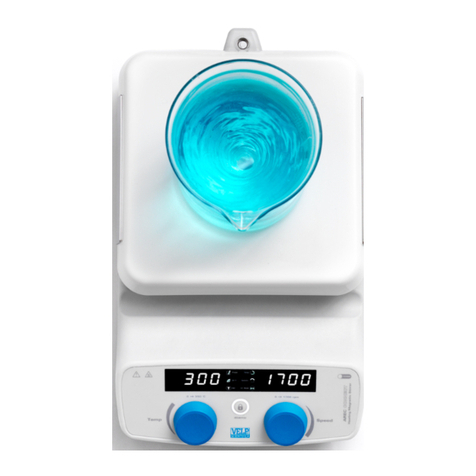
Velp Scientifica
Velp Scientifica AREC instruction manual
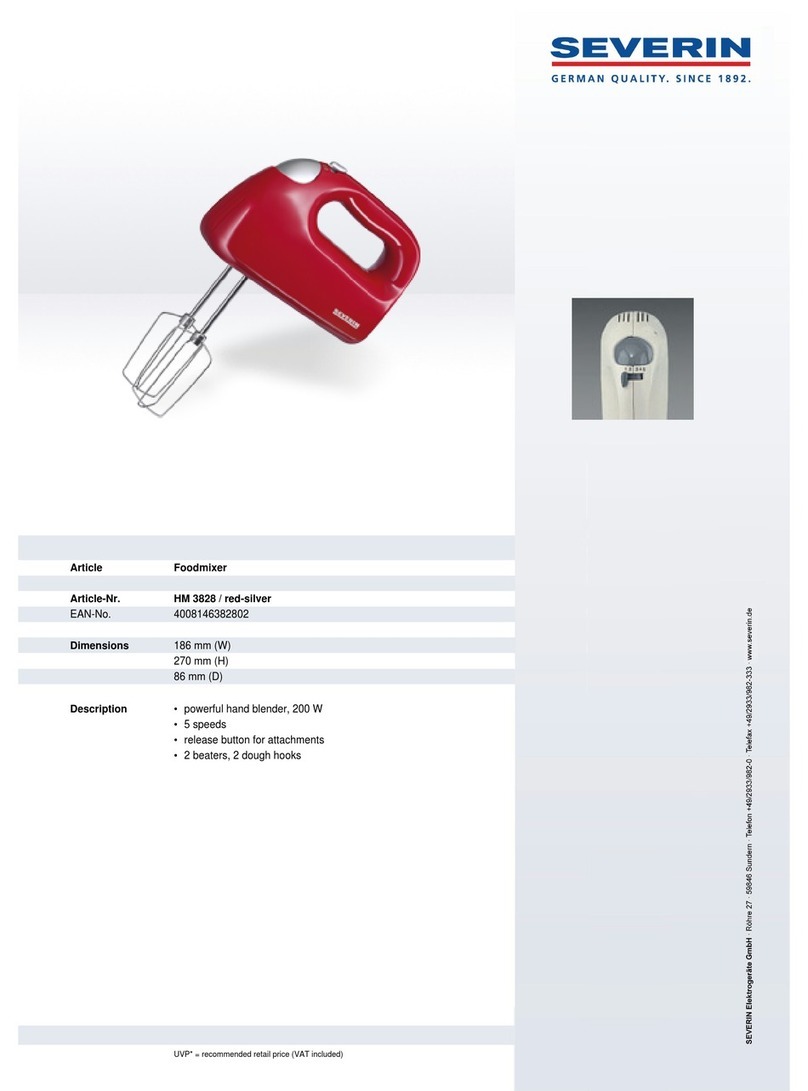
SEVERIN
SEVERIN HM 3828 Dimensions
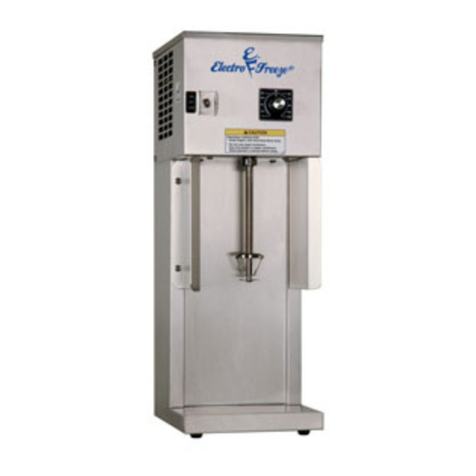
ELECTRO FREEZE
ELECTRO FREEZE Arctic Swirl HDM75A-1 Operator's manual

Northern Industrial Tools
Northern Industrial Tools 998253 owner's manual

Western
Western 1200 Operator's manual & parts breakdown
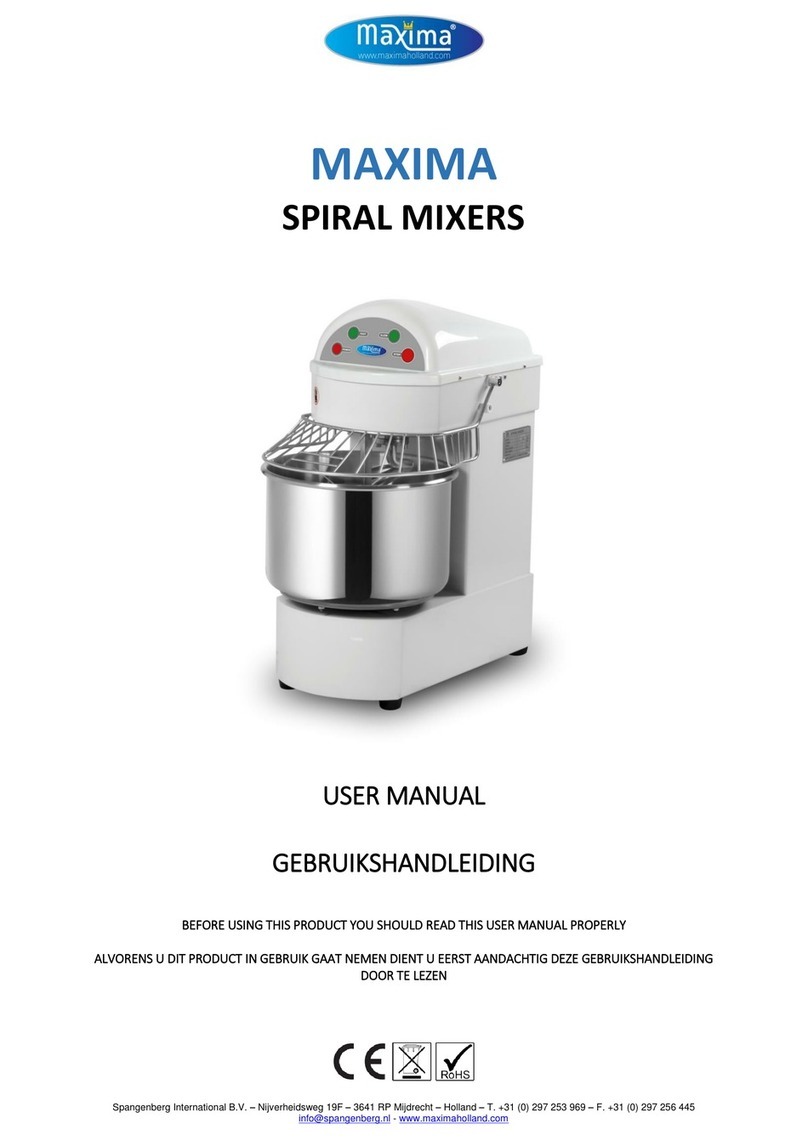
Maxima
Maxima MSM 10 user manual
